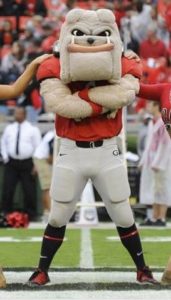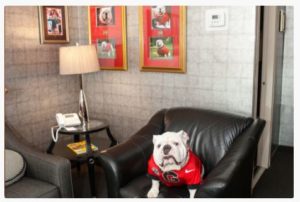By John M. Simpson.
In typical fashion, People for the Ethical Treatment of Animals (PETA) recently called for an end to live animal mascots at collegiate sporting events. This was apparently prompted by a “meet and greet” between the competing football teams’ animal mascots prior to the January 1, 2019 Sugar Bowl.
According to PETA, the mascot for the University of Texas at Austin — a longhorn steer named “Bevo XV” — “broke free of the metal barricades he was caged within” and “nearly trampled” the mascot of the University of Georgia — an English bulldog named “Uga X.” Based on the ESPN broadcast of this interaction — with multiple “instant replays” — it is debatable at best that there was any danger to the animals or the surrounding people. Bevo XV was tethered with a halter the entire time, and even PETA admitted that, as one of the UT handlers stated, the longhorn is as “docile as a lamb” and “was just going to say hi” to Uga X. Nonetheless, PETA cited this “frightening near-tragedy” as a reason why live-animal mascots should be replaced by humans.
PETA’s position obscures a few facts, not the least of which is that both animal mascots are supplied by families who each have extensive histories of caring and proper animal husbandry practices. Furthermore, while PETA advocates substituting humans for mascots, PETA apparently doesn’t know that Georgia already has a human mascot — who goes by the name “Hairy Dawg:”
It further appears that Georgia’s canine mascot may have it better than the human one. Uga X reportedly has his own hotel suite on game day:
In its call for the unemployment of Bevo XV, PETA also apparently was not familiar with the nearly 100-year history of the UT mascot and the fate of the original Bevo. When his handlers determined that he was “more of a liability than an asset,” Bevo was slaughtered, barbecued and served at the 1919 season banquet attended by UT Longhorns and Texas A&M Aggies, half of the animal going to each team.


